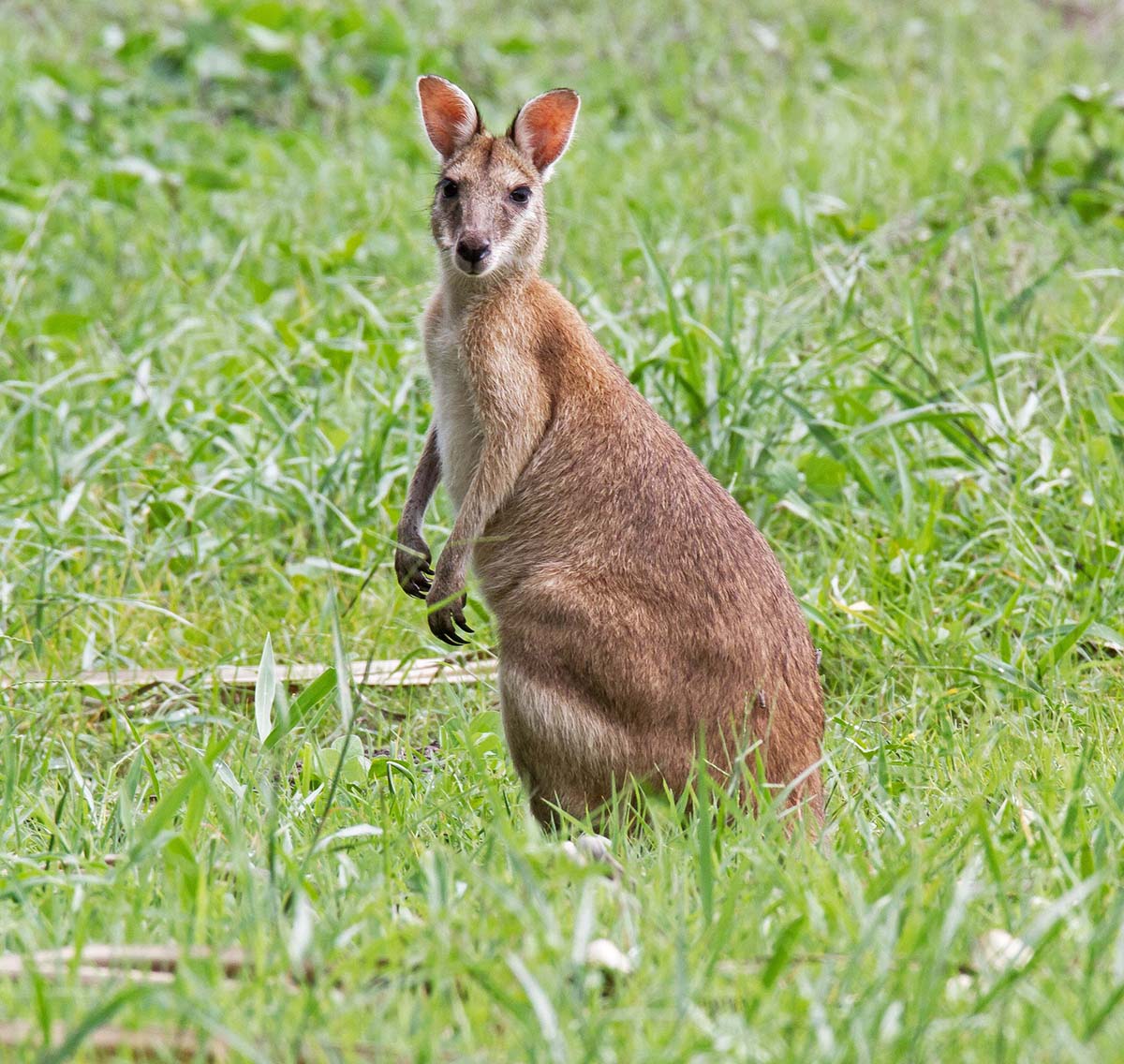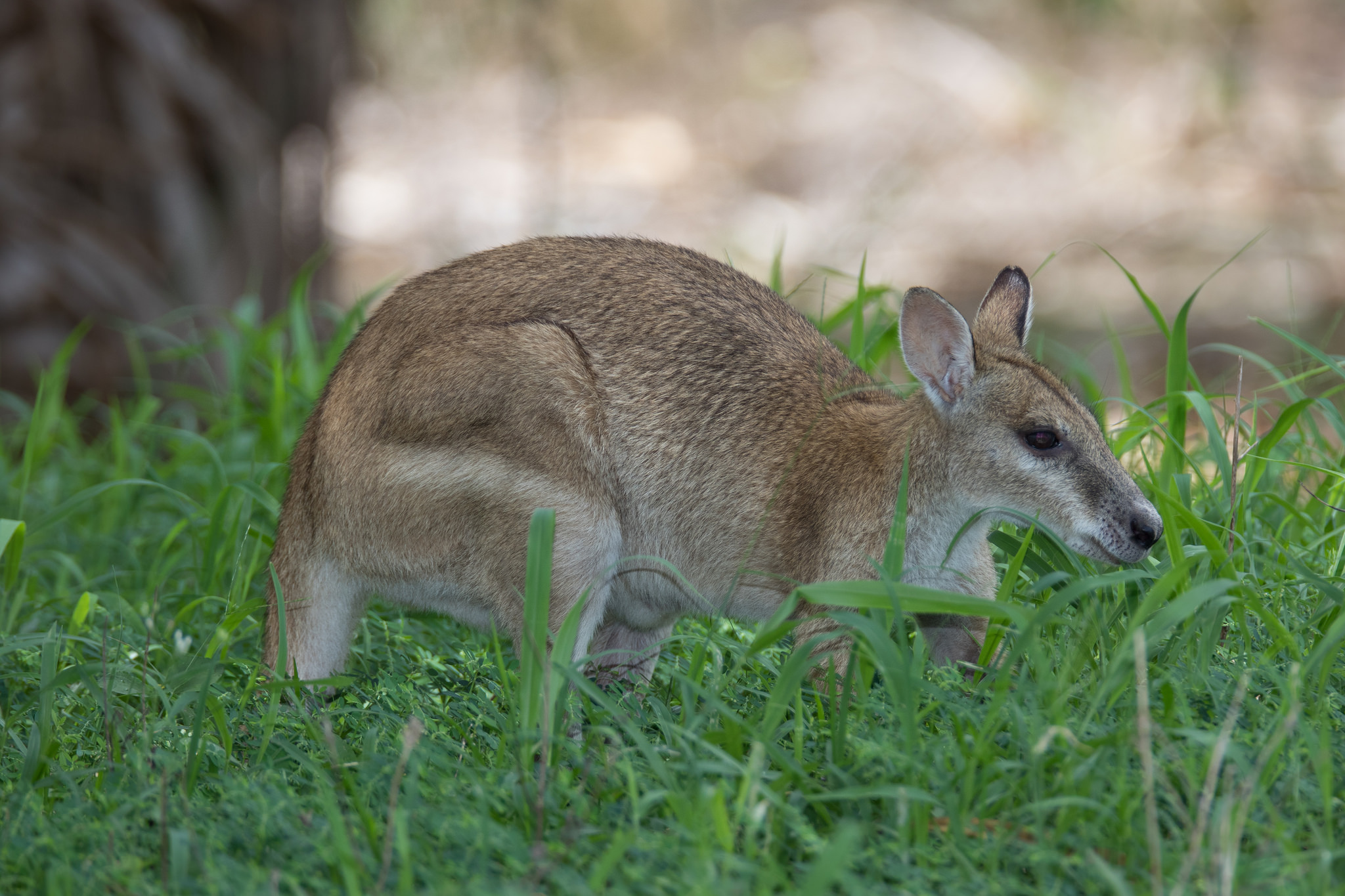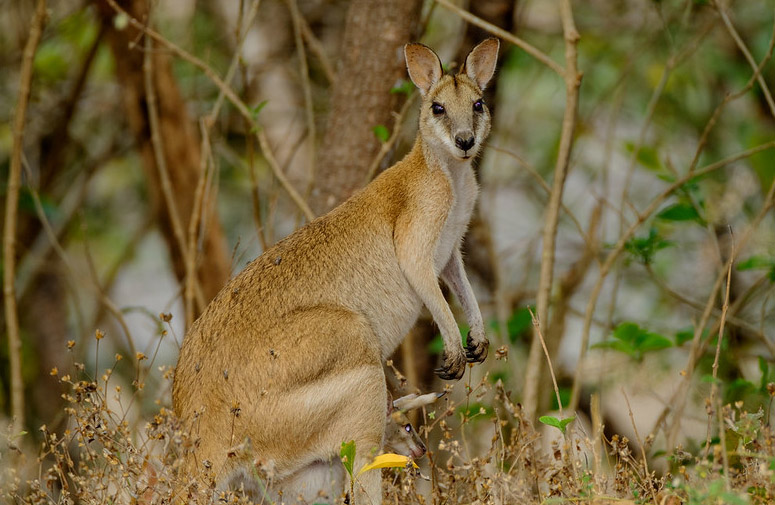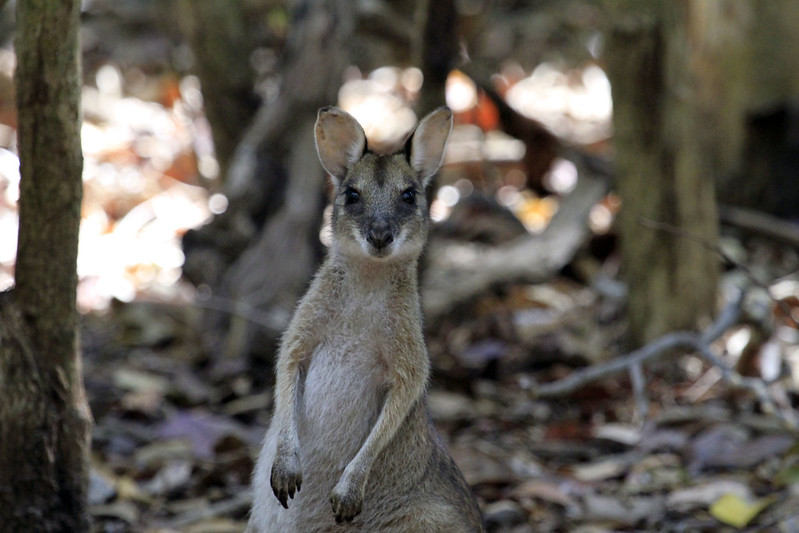Behaviour
Movement
Agile wallabies are social and live in groups of up to 10. They can be seen in larger groups when there is plenty of food.
Breeding
They have a short pregnancy period of around 30 days, after which the joey is kept in the pouch for seven or eight months.
Joeys leave the pouch at around 10 to 12 months old. Female wallabies generally mate again soon after giving birth but the embryo does not develop until the pouch is available.
Field Guide
Improve your identification skills. Download your Agile Wallaby field guide here!





